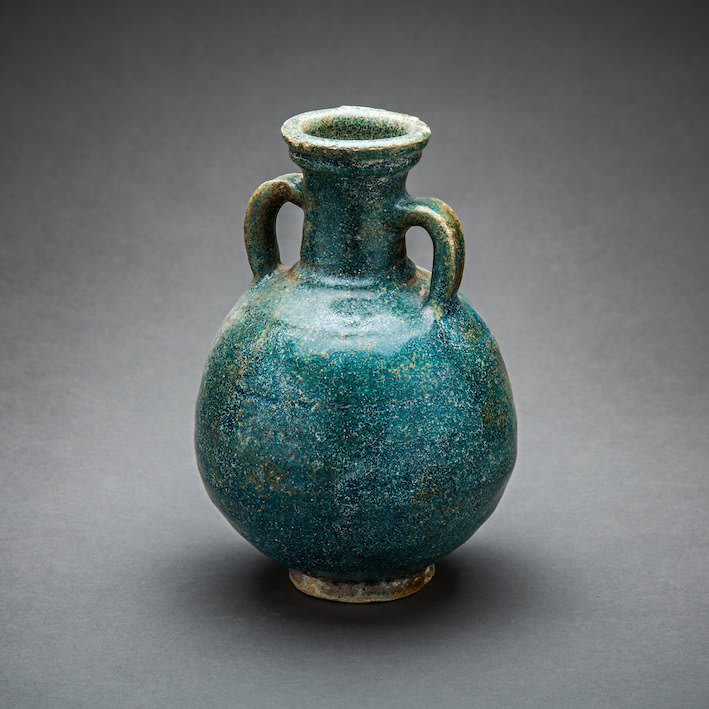Parthian Glazed Terracotta Amphora, 2nd Century CE - 3rd Century CE
Glazed Terracotta
height 21.6 cm
height 8 1/2 in
height 8 1/2 in
LO.516
Further images
There was considerable regional variation in the types of ceramic vessels produced in Mesopotamia during the Parthian periods. A distinctive feature of Mesopotamian manufacture was the use of blue, green...
There was considerable regional variation in the types of ceramic vessels produced in Mesopotamia during the Parthian periods.
A distinctive feature of Mesopotamian manufacture was the use of blue, green or yellow alkaline glazes. This is a particularly attractive example as the original deep blue colour survives unweathered. The glazes on Parthian pottery form part of a long tradition of alkaline glazing in Mesopotamia. Glazes were made by mixing the ash produced by burning desert plants with crushed quartz pebbles or quartz sand. The blue and green colours are due to the presence of minor amounts of iron oxide, with or without copper.
A distinctive feature of Mesopotamian manufacture was the use of blue, green or yellow alkaline glazes. This is a particularly attractive example as the original deep blue colour survives unweathered. The glazes on Parthian pottery form part of a long tradition of alkaline glazing in Mesopotamia. Glazes were made by mixing the ash produced by burning desert plants with crushed quartz pebbles or quartz sand. The blue and green colours are due to the presence of minor amounts of iron oxide, with or without copper.





